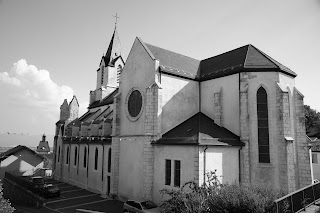

Morges once upon a time was an important commercial centre. For this reason a port, which nowadays serves as a port for yachts, was built at the end of the 17th century. The promenade along the lake shore of Morges stretches from the castle all the way to the Vertou Park and offers a fantastic view of the lake and Savoy Alps.

La Grande Rue - Main Street

Château de Morges
The Château de Morges which was built in 1286 by Ludwig of Savoy houses several military-historic museums, including the museum of historic pewter figures with 10,000 figures.

A view of the chateau from the port


Entrance to the castle


Galley "La Liberté" Project
The Mediterranean and Baltic Sea are not the only ones that were sailed on by galleys for centuries. This type of boat could also be found on Lake Geneva from the Middle Ages. Galleys were used for battles as well as for leisure and transport.
In 1992 Jean-Pierre Hirt had the idea to build a galley in Morges.

La Liberté
The construction began in 1995, after 3 years of studies.
The main objective was to provide work for the victims of the economic crisis in the 1990’s, as well as to keep the skill of galley building alive.
On June 23rd 2001, the launch of the galley attracted 45 '000 enthusiastic spectators and numerous media (TV and press) to the bay of Morges. The objective had been reached thanks to the will and the hope of more than 600 unemployed people and to the financial and encouraging participation of numerous partners. The result was excellent!

La Liberté on Lac Léman
On July 13th 2002, the galley obtained its licence to navigate with a motor with 120 passengers on board : the visits of the construction site ended … the cruises began …
On May 15th 2004, 72 students from the School of Champittet, helped by 36 rowers from the association of the galley, participate in the first official oars-outing, in a race against the clock at Ouchy. After that some sporting outings were organized.

La Liberté returning to port
In 2006 the sails are finished, but navigation exercises and the obtaining of the licence are still necessary before taking up cruises with sails.
Temple de Morges
This temple is exceptional by its refined architecture of the middle of the 18th century, of French influence. It was built by the architect of Vaud Rodolphe de Crousaz and the Bernese architect Erasme Ritter (Morges was then under Bernese occupation). With the churches of Yverdon and that of the Holy Spirit in Bern, these are probably the most beautiful specimens of the late baroque period in French-speaking Switzerland. The frontage of the temple of Morges is of a great nobility and points out French elegance. Moreover, as a starting point Crousaz use the plans of the Lyon's architect Léonard Roux. The temple of Morges is built in Ionian order. Two very beautiful stained glasses decorate the chorus of the temple of Morges. They are from Karl Wehrli (Zurich, 1896).

Place de l'Eglise




















